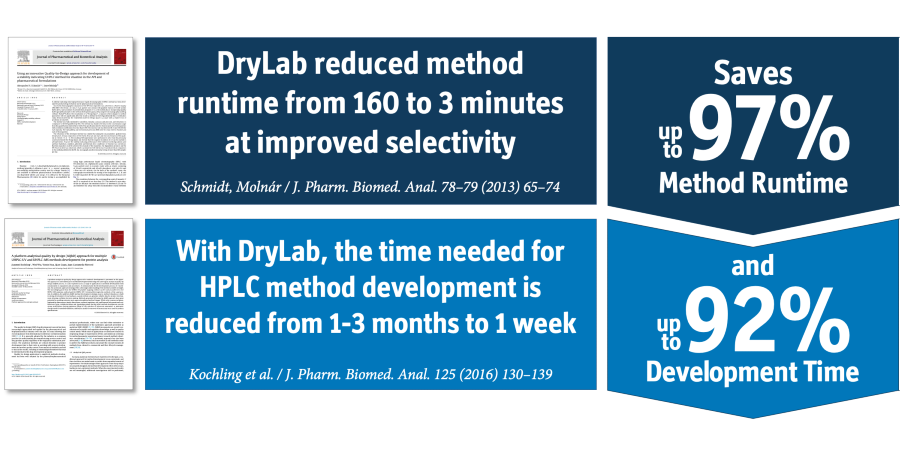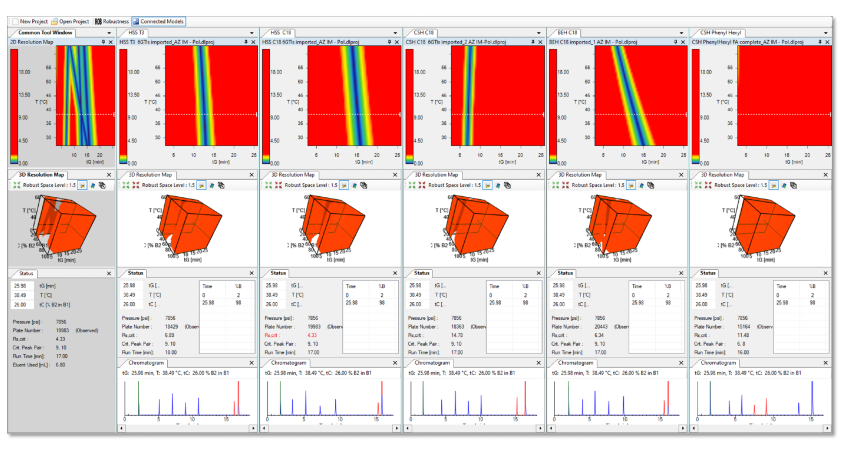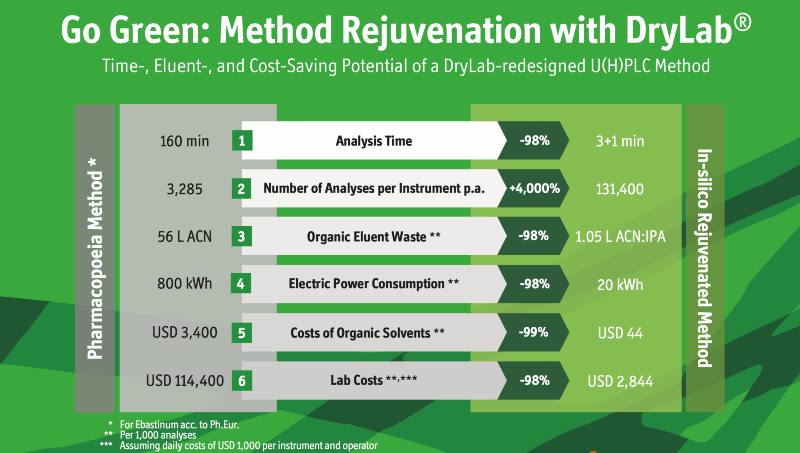Molnár-Institute produces DryLab, a HPLC method development and optimisation software that predicts chromatograms under a range of experimental conditions not available in the laboratory.
HPLC method development and running of input experiments
DryLab quickly and easily determines separation behaviours as multiple method parameters can be varied simultaneously such as pH, temperature, buffer and concentration.
The software is designed for the development of HPLC methods by optimising complex samples.
With data generated from up to 12 input experiments, DryLab can predict resolution and retention times for millions of unique, virtual chromatograms.
DryLab can define the analytical target profile (ATP) and help users choose a systematic approach and initial method conditions. Input experiments can be run and uploaded as cdf files, the universal format for chromatographic data systems.
Match peaks and control errors in HPLC
DryLab offers user-friendly features to help manage input runs, streamline peak tracking and control errors.
The identification and assignment of peaks from a set of systematic experiments is an important step in controlling the HPLC method development process.
DryLab’s peak tracking feature includes peak areas and molecular masses, and acts as an efficient tool for preparing tables in an organised and systematic manner.
Users can reorder and turn positions within the table, as well as separate double and triple peaks, and reduce complexity. The software is colour-coded to indicate the likelihood of correct identification.
A comparison feature checks original experimental runs against the user’s DryLab model to manage the errors.
Build multi-dimensional resolution models for the pharmaceutical industry
Based on design of experiments (DoE), DryLab creates multi-dimensional resolution models that show the conditions required for the user to achieve baseline separation or higher.
Users can view the predicted chromatogram for any point within the model, and with one click, select the working point with the highest critical resolution.
DryLab predicts peak width and retention times with 99% accuracy.
Evaluation of additional parameters in separation testing
Users can predict how changes in additional method parameters affect separation, such as flow rate, column dimensions, instrument parameters, and eluent in gradient and isocratic conditions.
The software provides maximum flexibility for method optimisation and transfer.
Test separation robustness thresholds in pharmaceuticals
Once a working point is selected, the separation’s tolerance limits can be tested by evaluating the impact of small fluctuations on up to six critical separation parameters.
Using DryLab, it can be determined which parameters exert the greatest influence on the method and must be strictly controlled to achieve 100% success in routine applications.
DryLab’s robustness module tests tolerance limits of the working point by computing the number of out-of-specification (OoS) results that occur given small fluctuations in method parameters.
The following conditions can be evaluated:
- Gradient time
- Temperature
- pH or ternary composition
- Flow rate
- Start %B
- End %B
A chromatogram is generated for every possible combination of errors and shows the range of resolution values to be expected during routine application.
Based on the number of successful experiments, the user may wish to choose a new working point to ensure safer results during routine application.
Method parameters can be evaluated to exert the highest influence on separation, which is highly useful for setting up an efficient control strategy.
Create GMP method documentation with knowledge management
DryLab’s final step is to create a comprehensive knowledge management report that pulls all method data directly from the software, and provides a platform to justify and comment on criteria and choices.
The software encourages a quality by design (QbD) approach to method development. This approach ensures conformity to these standards by providing a comprehensive report, including a platform for the step-by-step justification of method choices.
By implementing DryLab knowledge management, excellent GMP documentation of can be achieved.
DryLab provides easier and effective collaborate between departments and supports analytical method transfer during development and manufacturing.
DryLab knowledge management provides an analytical summary to be signed and dated by the author and supervisor, making it GMP compliant and ideal documentation for inspections.











